1987 Lhasa riot, Tibet
The first of October is also Chinese National Day. Just after nine in the morning, twenty-three monks from Sera monastery set out along the Jokhang Temple circuit walking in a clockwise direction and were joined by eight monks from theJokhang and three from Nechung monastery. Once again, lay Tibetan sympathisers joined them. They began to march around the Temple in a group, calling for Independence for Tibet. This time, the police were better prepared and responded more quickly. On the fifth circuit, the marchers found their way blocked by around one hundred police officers supported by jeeps and motorcycles with sidecars. Again the police broke up the march with a baton charge supported by motorcyclists with sidecars who drove into the demonstrators.
This time they also wielded electric cattle prods. Around fifty people, including monks from Sera monastery were arrested and taken to the two storey, flat roofed police station facing the south-westerly corner of the Jokhang Temple. Among them were the three Westerners who had been photographing the march. As the news of the arrests spread through Lhasa, a crowd of nearly three thousand Tibetans assembled in front of the police station.
High-ranking TAR Government officials arrived at the police station and spent thirty minutes trying to convince the detainees that these political activities should be brought to an end. As the police dragged the three Westerners through the police station, they saw the monks squatting in the courtyard being beaten with shovels by men in uniform.
Meanwhile, in Barkhor Square, the mood of the crowd became increasingly agitated as news of the beatings spread. Some of the demonstrators broke paving stones, while others collected rocks from building sites in the streets around the Square. They began to bombard the watching police and a Chinese TV crew who retreated into the police station, leaving their vehicles unattended.
Groups of women and children overturned their abandoned vehicles and set them on fire. The tally of burning vehicles soon mounted. Before long, eight jeeps, three motorcycles with sidecars, and a truck close to the TAR Government Offices in Renmin Lu were ablaze. Years of repressed anger were released in a frenzy of destruction.
As I made my way towards the main body of the demonstrators, I walked too close to one of the burning jeeps as its fuel tank exploded with a dull thud. The heat of the explosion seared my face, forcing me to break into a belated jog.
At the other end of the Square, demonstrators had piled blankets and towels around a motorcycle with sidecar that had been dragged against the main entrance to the police station. Fuel leaking from the motorcycle soaked into the fabric and was set on fire in an attempt to force the release of the arrested monks.
The fire quickly took hold of the building and dark clouds of smoke billowed up into the sky. In the resulting confusion, most of the arrested demonstrators escaped into the alley between the police building and the school. A monk from the Jokhang – Champa Tenzin – tried to help the escapees out of the burning police station and was forced back into Barkhor Square with the skin on his forearms burning. He was later paraded on shoulders of crowd round Barkhor Square.
Making good use of the chaos caused by the fire, three of the arrested monks escaped from police building, only to be mown down by very accurate fire from at least one marksman with a high velocity weapon, probably an AK47. A surge of the crowd carried me forward to a position opposite the north-facing side of the police station. A dozen or so Tibetans gathered around me to shield me from flying rocks and the attentions of the police. They pointed to my camera and made it clear to me that they wanted me to take pictures of the riot and the police response. I was happy to oblige.
Fire engines and reinforcements – some armed – arrived, but were fought off with a barrage of stones. They were not equipped with riot gear. The reinforcements retreated to a safe distance along Renmin Lu and hung around in aimless groups. They seemed to be waiting for someone to make a decision.
Video cameramen supported by armed police officers appeared on the roof of now burning police building. The intelligence arm of the PSB was keen to film the demonstrators, presumably so that they could track them down at a later stage. They were greeted with a hail of stones. At first, the police officers only response was to throw stones and rocks back at the crowd. It was not long before they start shooting.
At around eleven o’clock, the sound of single shots and automatic fire echoed across the Barkhor Square. The distinctive sound of a Kalashnikov being fired in semi-automatic mode brought back memories of time spent with the Mujahedeen in the Chitral valley.
But it turned out that the first shots were fired inside the police station. A twenty-five year old monk from Sera monastery was killed instantly. Two lay Tibetans were wounded – one in the shoulder and the other in the leg.
The first sound of gunfire did not give me much cause for concern. At first I assumed, wrongly, that that the soldiers were aiming their shots over the heads of the demonstrators to try to get them to disperse. At worst, I supposed that they could be firing rubber bullets or tear gas canisters – after all that is what happened in Northern Ireland. It was not conceivable to me that the authorities would sanction the killing of unarmed demonstrators.
When the crowd did not disperse, police gunmen aimed at the demonstrators’ feet. Ricochets danced across the surface of Barkhor Square; some crashed though doors; some slammed into walls; some buried themselves in calves and thighs. Then, without warning, marksmen armed with high velocity rifles raised their sights and fired with deadly intent.
The unseen marksmen killed several people immediately and badly wounded others. With the encouragement of the Tibetans around me, I tried to capture as much of what was happening on film. Through the camera viewfinder, the riot seemed very unreal. I felt no sense of danger and could not consider the possibility that I was in any danger. The excitement of the moment was intense and a surge of adrenaline made sure that I felt no fear.
Throughout my teens, I lived with images of the violence of the Vietnam War – in newspapers, magazines and on the television. The horrors of warfare that accompanied many evening meals became commonplace and to an extent, lost their impact. Through the viewfinder of my camera, the sight of young men in uniform shooting into the crowd did not seem to be very much different.
A young man standing in the crowd with one fist raised in defiance was shot about twenty metres from me. The high velocity bullet entered the front of his head and passed into the shoulder of the man standing behind him. Killed in an instant, he stood very still for a second and then crumpled to the ground. The remains of the back of his skull and bits of brain were splashed over his wounded friend.
His death finally alerted me to the very real danger that the marksmen could have just as easily shot me – especially as I was so much taller than the average Tibetan. In fact, I must have stood out like a sore thumb and would have made an easy target if anyone have chosen to aim at me. Turning away from the police station, I made a hasty exit from the Barkhor Square and found refuge behind a thick stonewall. Using the buildings around the Barkhor as cover, I worked my way round to the front of the Jokhang Temple. To my surprise, I found that I was shivering with excitement – the reality of the killings had still not really registered.
Meanwhile, Jasper Becker (Manchester Guardian) and Guy Dinmore (Reuters) arrived at the Lhasa Hotel, having flown in on the morning flight from Chengdu. As they checked in, their eyes were drawn to a hand-written message scrawled on a blackboard set up in the lobby:
DUE TO TRAFFIC PROBLEMS
THE REGULAR SHUTTLE BUS
TO THE BARKHOR SQUARE
HAS BEEN CANCELLED.
WE APOLOGISE FOR ANY
INCONVENIENCE
They were both keen to make the most of their time Tibet and looked for a taxi to take them to the centre of Lhasa. The problem was that there were no taxis to be seen around the hotel and no one was able to say when a taxi might turn up. Being intelligent and resourceful journalists, they decided instead to rent bicycles from the hotel.
As they prepared to get on their bicycles, the sound of gunfire coming from the centre of Lhasa caught their attention. Jasper recognised the sound and frowned.
“That sounds like a Kalashnikov being fired in semi-automatic mode, what the hell is going on?”
With as much speed as they could muster given the effect of Lhasa’s thin air, they pedalled towards the centre of Lhasa. As they got closer to the sound of the shooting, they encountered hundreds of panicking Tibetans running in the opposite direction – away from Barkhor Square. As they passed the crossroads by the Friendship Store, they passed hundreds of armed soldiers standing around aimlessly in groups apparently waiting for orders.
Every journalistic instinct must have told them to keep going. Gradually, they realised that they were about to bear witness to an important moment in Tibetan history. They pedalled on to Barkhor Square and found several thousand angry Tibetans besieging a burning police station.
Meanwhile, I finally reached the great entrance to the Jokhang Temple and met an elderly British couple about to leave the mayhem for the safety 0f the hotel. They paused for a moment to tell about their experiences on the roof of the temple. They were not concerned for their own safety – and they were very upset.
“We were on the roof of the temple when the shooting started and witnessed the reaction of the monks around us.”
The woman was calm, but very angry. Her husband stood by her and stared at me with sadness in his eyes.
“We saw monks taking a weapon from an armed policeman on the roof of the Jokhang Temple. They did not try to use it. Instead they tried their best to smash it to pieces.”
Clearly moved by what she had seen, the woman glowered in the direction of the police station.
“This is all so terrible – dreadfully terrible and so unnecessary. The Tibetans are a peaceful people.” Later, a Tibetan told me that that a group of angry demonstrators had stoned the policeman to death.
The police killed at least seven Tibetans in the space of a couple of hours. Sixteen more were shot and wounded. Nine were beaten by police officers wielding rifle butts, belts and shovels. A couple of monks were burned – one very badly.
A few minutes later, an Englishman clutching a first aid kit with a very agitated Tibetan in tow approached me.
“Do you know anything about first aid?”
He had a very direct manner and was clearly in a hurry. Peering at me from behind his glasses, he seemed anxious for me to offer to help.
My basic first aid training had always been good enough in the past, but nevertheless had always been fairly basic. I nodded and tried to explain that my knowledge of first aid was limited.
“Any first aid knowledge will help. Come with me.”
The Tibetan led us into the maze of narrow alleys behind the Jokhang and through a gateway into an open courtyard. He closed the ancient outer door behind us and then took us across the courtyard into an unlit room. At first, I could make out nothing in the darkness, but as my eyes adjust to the gloom, I saw a man in his thirties sitting on a wooden chair.
As I got nearer, I could see that he had a bullet hole in his leg, just about his ankle. The wound was not bleeding much and there was no sign of an exit wound. The entry point was rectangular, with one end slightly rounded. Judging from the size of the hole and my limited knowledge of firearms, I guessed that he has been shot with a low velocity 9 mm weapon – possible a pistol. It looked as if the bullet has entered lengthways. I was no expert, but it could have been a ricochet or perhaps the bullet had been tumbling when it hit. A round from a high velocity weapon would probably have taken half of his lower leg away.
This not the first time that I have been faced with injuries that I do not know how to treat. When I was only seventeen, I bunked off school with two friends and tried to hitchhike to the nearest cinema. After failing dismally to get a ride, it soon became clear that we were going to miss the film. To make matters worse the skies opened up, drenching us with freezing rain.
When the rain turned into hail, we began to wonder if we would have been better catching a bus. At that moment, a truck coming towards us jack-knifed and careered into a mini van that had just passed us. The remains of the mini van spun across the road and came to a stop on the verge some fifty yards away from us. The truck ended up embedded in a house.
We ran to the mini van to find that the engine been ripped off its mountings and had been driven through the bulkhead into the space occupied by the driver. Despite horrific injuries, the driver was still alive – his head had been split open revealing part of his brain; one of his legs had been severed above the knee by the engine block; the steering column had penetrated his ribcage on impact; as the mini van came to a halt, he was thrown backwards. The movement pulled him off the steering column and left a section of lung on his waistcoat. Not knowing what else to do, I covered him with my coat in an attempt to keep him warm and took his pulse. I was just in time to feel him die.
The sight of the wounded Tibetan shivering with a combination of shock, pain and terror helped us overcome any qualms. After a brief discussion about how best to help him, we made a start. Our first action was to ask his wife for a blanket to keep him warm.
At the request of the family, I tried to photograph the Englishman cleaning and dressing the wound. As the batteries in my camera were close to the end of their life, they took an age to charge up the flash. Everyone waited in the gloom for the green light on my camera to appear. In the silence of the room, the whining noise of the flash slowly charging itself was almost deafening. Time seemed to slow and we all stopped breathing. Eventually, the green light appeared and I finally managed to photograph his leg.
Then we approached the wound itself. In reality, there was little more that we could do – we tried to tell his family that he must see a doctor. The trouble was that they knew that if he went to a doctor, he would be arrested. If he did not go to a doctor, the wound would probably become infected and there was always a risk that he would have lost his leg as a consequence. He could also have died of shock.
As the house had no electric lights, we worked in almost total darkness, aided only by the light from a torch. The family watched as the Englishman cleaned and dressed the wound, filling the silence with their whispers. Afterwards, the man’s wife placed cups of lukewarm yak-butter tea before us and smiled.
The door to the courtyard opened and a man slipped in with the news that police patrols were in the vicinity looking for wounded Tibetans. We could not leave until they were certain that the police were not outside. The prospect of the police finding us giving first aid to a wounded Tibetan was not appealing. As we waited silently for the patrols to move away, the riot rumbled on in Barkhor Square.
As soon as the Tibetan lookout gave the “all clear” signal, we made our escape and headed back towards the scene of the riot. A hundred yards from the bloodbath in Barkhor Square, a Uygur black marketeer stopped me to ask if I wanted to change any money. In the midst of all of this unrest, there were still people trying to make a profit as if this were any ordinary day. The smell of burning vehicles hung uneasily in the air and was a reminder that this is no ordinary day.
With care, I moved around the southern side of the Jokhang Temple to try to see what was happening in Barkhor Square. The way was blocked by market stalls that had been turned on their sides by the rioters to make barricades. As I got nearer, I could just make out the remains of the still burning motorcycle and sidecar jammed against the main entrance of the burning police station. Dense clouds of smoke billowing out of the front of the police station provided evidence of the intensity of the fire within.
Earlier, Jasper had managed to capture a photograph of a monk standing in front of the police station. Frozen in time with one upraised arm, the monk’s face is twisted into a grimace and his purple robes framed by bright orange flames rising from the inferno. Time magazine would eventually publish the photograph and fix the image in the sad history of Tibet.
Caught up in the excitement of the moment, three Americans and a Britain were seen throwing rocks at the Chinese during the riot by other foreigners. This could have been a problem for all foreigners in Lhasa, because the Chinese would have liked nothing better than to have had the opportunity to suggest that external agitators had triggered the riot. There was a rumour that a few days before the main riot the police had caught two of them posting anti-Chinese propaganda in and around Lhasa. Apparently, they had even put up one pro-Tibet poster in the main police station.
The shooting continued and then almost stopped leaving behind an uneasy calm. From time to time, the occasional sound of gunshots clattered around Barkhor Square. Some of the gunfire was clearly from automatic weapons.
At approximately twelve-thirty, about five hundred police reinforcements arrived in Barkhor Square. They immediately set about clearing the area in front of the police station – and the alleys around it – by firing automatic weapons fired over the heads of the demonstrators.
As rioting Tibetans flee from the gunfire, I could not help but notice that many of them were laughing and giggling. I can only assume that the whole fantastic scene was not real to them either.
Despite being outnumbered by the crowd, the reinforcements remained outside the police station, facing the rioting Tibetans. They had not been equipped with riot gear, nor did they have shields with which to protect themselves from the barrage of rocks hurled at them. Their injuries were very real.
Around this time, the police arrested twenty more demonstrators and held them in the school opposite the burning police building. The police beat them with rifle butts and rocks. Later, foreigners reported that they saw monks taking off their robes to avoid being arrested.
Visiting nomads prostrated themselves in front of the Jokhang Temple as the rioting continued.
Two boys aged about ten moved out in front of the crowd and stood facing the police station. Using slingshots woven from yak-hair, they hurled rocks into the police station with great accuracy. As one boy’s slingshot snapped and the stone shot off at an angle, he caught me watching him from behind the barricades and grinned.
A movement caught my eye. Looking up, I could see a uniformed officer who appeared halfway along the roof of the burning police building. He pulled out his pistol and fired into the crowd. The crowd responded with a hail of well-aimed stones. When a stone knocked off his peaked cap, he bent down, picked it up, dusted it down and put it back on his head. He then continued firing shots into the crowd. He was very composed and very focused. As he looked down onto the crowd with a look of contempt on his face, it seemed clear to me that this was not a controlled response – it was an act of vengeance.
Demonstrators – including small boys – crouched behind barricades in front of the police station and continued to sling stones through the smoke filled windows. The fire moved swiftly from room to room devouring anything in its way. As purple plumes of smoke poured out of shattered windows, the barrage of stones stopped. There was nothing to be gained by stoning clouds of smoke.
Unseen by the demonstrators, a young German – one of the Westerners taken to the police station – had been now held for nearly three hours and was getting increasingly worried. As the fire took hold, the police moved him deeper into the building in an attempt to escape the choking smoke and the heat of the flames.
Despite the very evident danger to themselves from flying rocks and stones, his captors gave him the only enamelled washing bowl and told him to use it to protect his head. The young German eventually escaped from burning police station with the help of Tibetan police officers. They had to break a hole through a wall to the roof of the building next door to escape the fire. Later, he told me that throughout his time in the police station, the police officers were generally friendly towards him and he was adamant that they had done everything they could to make sure that he was not harmed.
At around two in the afternoon, an eight-year-old boy was shot and killed in Barkhor Square. The bullet entered his back and exited leaving a fist-sized hole in his chest. A section of the crowd carried his pathetic little body on a plank down Renmin Lu towards the TAR Government compound. Leading the throng was an eight-year-old boy. As they passed, a few of the marchers throw stones at the windows of Chinese shops and restaurants, but this was more like a funeral procession than a demonstration.
The procession stopped in front of the TAR Government compound. As a line of police moved to block the Fugate entrance to the compound, the sombre mood changed and gave way to anger. The mourners started tearing up paving stones to throw at the guards standing in front of Fugate. A handful of men attacked a passing truck and set it on fire. A few moments later, they attacked a jeep and set it on fire. The boy’s limp body was left on a raised traffic island in front of the TAR Government compound.
Moments later, I bumped into Guy Dinmore, who introduced me to his companions – Jasper Becker and Scott Douglas-Bellard, the new US Consul in Chengdu on his inaugural visit to Tibet.
Around three o’clock in the afternoon, the police moved away from Barkhor Square and left the police station to burn itself out. Shortly afterwards, the crowd melted away, leaving behind only bloodstains, empty shell cases, scattered piles of stones and rising columns of smoke in Barkhor Square.
There were around two hundred foreign tourists in Lhasa on the morning of the riot, but only about fifty of these foreigners were in or around Barkhor Square. Chinese press reports of the riot would eventually describe them as being ‘foreigners posing as tourists’
Copyright (C) Chris Frost, 1988
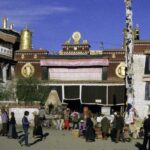
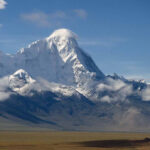
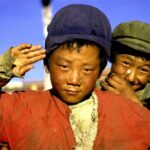
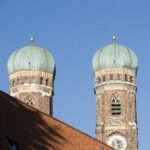
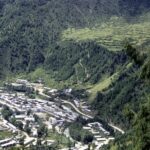
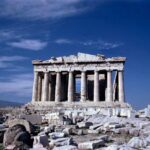
Thank you